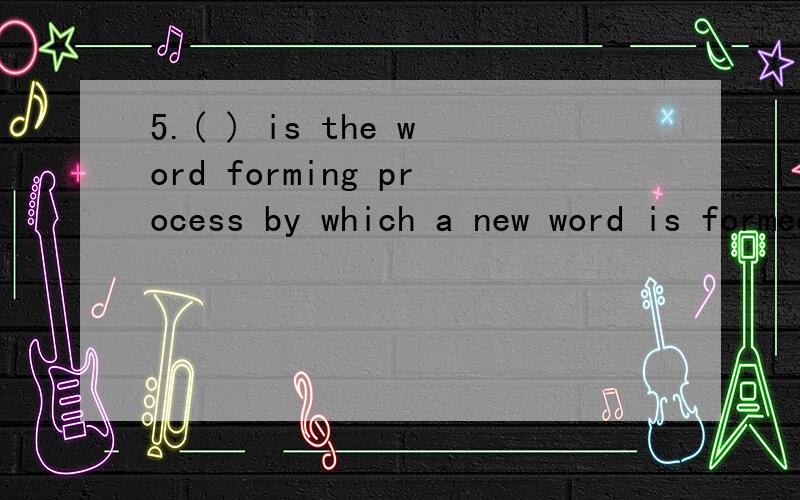5.( ) is the word forming process by which a new word is formed by adding rather than subtracting elements.For example,“beg” is formed by cutting –ar from the noun “beggar”.A:Conversion B:Clipping C:Backformation D:Initialism 6.( )
来源:学生作业帮助网 编辑:作业帮 时间:2024/07/18 06:30:59

5.( ) is the word forming process by which a new word is formed by adding rather than subtracting elements.For example,“beg” is formed by cutting –ar from the noun “beggar”.A:Conversion B:Clipping C:Backformation D:Initialism 6.( )
5.( ) is the word forming process by which a new word is formed by adding rather than subtracting elements.For example,“beg” is formed by cutting –ar from the noun “beggar”.
A:Conversion
B:Clipping
C:Backformation
D:Initialism
6.( ) begins with the coming of Frisians,Angles and Saxons into England (roughly 450) to 1066,the time of the Norman Conquest.
A:The Old English Period
B:The Middle English Period
C:The Early Modern English Period
D:The Late Modern English Period
5.( ) is the word forming process by which a new word is formed by adding rather than subtracting elements.For example,“beg” is formed by cutting –ar from the noun “beggar”.A:Conversion B:Clipping C:Backformation D:Initialism 6.( )
A 转换;B 裁剪、剪辑;C 逆序造词,倒反构词(英语中的一种构词法:把一个现存的词的真正后缀或貌似后缀的部分脱落而形成该词的另一种词 类,即文中所提到的);D 首字母组合词,首字母缩略词
本题选C
(A)始于弗里斯兰人\盎格鲁人\撒克逊人(在6世纪曾征服英国部分地区的西日耳曼人)的到来(大致从450年至1066年),始于诺曼征服(1066年诺曼人威廉一世征服英格兰)的时代.